Envisioning a Steady-State Comprehensive Plan
by Dave Rollo
”Economic growth” is commonplace in the daily news. We assume it’s a good thing, that a 2–4 percent increase in GDP is beneficial to all. Likewise, we hear that our communities are growing, and we see a 2–4 percent increase in population as reasonable and benign. Meanwhile, visionary community leaders are busy planning for a steady feed of single-digit annual growth. So we’re in good hands, right?
But what the news reports miss is that any steady rate of growth is an exponential function that contains within it a knowable doubling time. Suppose a reporter added this: “County officials say that at 3.4 percent growth annually, our county will double in population in just over 20 years.” Would this capture our attention? Would we respond differently? A doubling of population, of water demand, of schools needed, of traffic! And what about taxes?
Suppose the reporter further spelled out the meaning of this growth. “Developers are proposing new housing tracts on the farmland just outside town. If trends continue, the radius of our city will double in two decades.” The intrepid reporter continues: “Doubling the radius of Central City will quadruple the built area of our community!” Now the mind is reeling. Time to pull the car over. What are these county leaders thinking?
The reporter might also note that the expansion of our built environment is doing measurable harm to our environment and quality of life. Two examples: The USA is losing farmland at a rate of 1.8 million acres per year. And more than 40 percent of groundwater wells in the U.S. are declining faster than they are recharged. It seems growth is not so benign after all.
Local communities need more than ever to safeguard their own life-support systems by taming growth and retrofitting existing dwellings and neighborhoods to respect limits. This requires reality-based community planning, typically reflected in a fundamental document: the comprehensive plan. A comprehensive plan has long been the means to regulate development in an orderly fashion. Now it must evolve to help towns and cities live within limits set by nature.
The Evolution of Community Planning
Most counties and cities within the USA have a long-range plan that anticipates urban expansion. The Comprehensive Plan (sometimes referred to as a “Growth Policy Plan”) was developed early in the twentieth century as the need for universal community planning became clear. At that time growth was expected and invariably desired. Growth promised more of everything, including tax revenue for local government. Comprehensive plans promised an ordered development by zoning for specific uses and building public infrastructure to serve them.
Cheap energy helped create cheap transportation, which encouraged physical expansion and accelerated the conversion of farmlands and wildlife habitats into housing tracts and strip malls. This post-World War II conversion was lamented not only by conservationists, but by urbanists of the day, who foresaw the drawbacks of sprawl such as pollution, traffic congestion, and social isolation. The manifest problems of sprawl began to be recognized widely in the late twentieth century. In response, “smart growth” was promoted to ameliorate the worst effects of unimpeded expansion.
At about the same time, comprehensive plans began to incorporate broader themes, including community vision and values, retention of community character, the value of ecological services, and quality of life. This expanded view, while reflected in only a minority of comprehensive plans, laid the groundwork for challenging the growth mandate. It advances the public good not just via quantitative metrics of physical material or GDP, but also through the use of measures of human wellbeing. It enables questions such as, “What is the optimal size of our community?”
A Path to Real Sustainability
Municipalities and counties that envision quality of life beyond simple growth metrics have often incorporated the concept of sustainability into their planning documents. Supposedly sustainability is achieved at the intersection of the environmental, social equity, and economic dimensions of community life.
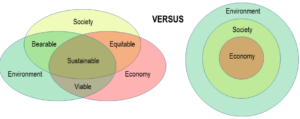
Partial and more accurate visions of sustainability, respectively. (Penn State)
While helpful in some contexts, this intersectional approach to planning allows “sustainability” to be acknowledged while denying any need for limits on economic expansion. This denial is never made directly but in a workaround fashion. For example, the American Planning Association professes a concern about climate change but endorses “smart growth” adaptations to address the climate threat, despite the obvious and long-documented relationship of greenhouse gas emissions to GDP.
A fundamental requisite of a steady-state comprehensive plan is to acknowledge that human economies are subsidiary to the biosphere. Therefore, local plans should incorporate limits that preserve biocapacity for humans and our fellow species. This is explicitly described in the ordered hierarchy of sustainability, in which the economy is embedded in society, which in turn is nested in the environment. It should appear in the introduction to the comprehensive plan. An example would be the Bloomington, Indiana Comprehensive Plan Executive Summary: “Our community has resolved to do our share to protect the biosphere, and critical to this protection is recognizing that infinite growth is neither possible nor desirable in a finite world.”
The most basic obligation of local government is the health, safety, and welfare of the community. Meeting this obligation requires a stable climate, productive and regenerative food systems, and biodiversity conservation. Protecting these natural assets necessitates limits to growth of the built environment.
Integrating real sustainability in a community’s comprehensive plan requires taking into account the carrying capacity of land under community control. It also requires impact measures such as ecological footprint analysis that describe impacts relative to the biocapacity of the area. Carrying capacity and impact analysis represent important inputs to the design of a zoning code to limit growth.
A Framework for a Plan
Modern comprehensive plans begin with a vision statement for the community followed by a summary of the plan and the relevant chapters for its implementation. A vision for a county intending to create a steady state economy would acknowledge limits to the GDP growth of the county and to its physical expansion. This vision could be affirmed in a statement—perhaps a “Declaration of Limits”—by the elected representatives of the county or municipality and adopted by the county commissioners or the city council.

Plan Ithaca. (Ithaca, New York: Vision for Our Future).
A steady-state comprehensive plan would then focus on preserving the county’s natural capital, green infrastructure, and agricultural land while improving and building upon the community’s historic, cultural, and civic assets. These goals can be detailed in the plan’s chapters, directing departments within the local government to implement programs and policies to achieve the objectives of the plan. The plan can also provide a benchmark for progress.
The structure of a steady-state comprehensive plan would be similar to that of a conventional growth-oriented plan. Functional areas such as transportation, economy, housing, and land use would offer guidance to planners and elected bodies in dealing with important infrastructure works and sectoral activities. But instead of a growth-oriented approach to development, steady-state plans would emphasize qualitative optimization of each topic.
For example, transportation planners might halt road expansion and focus instead on expanding public transportation and building trails for biking and walking. They might also create, through land-use planning, residential/work nodes that minimize the need for travel. These efficiencies would be aligned with sustainability goals that aim to reduce energy and carbon emissions.
Steady Statesmanship, Chapter by Chapter
The Economy chapter would focus on wellbeing and would adopt quality-of-life objectives in place of measures of GDP. (To be clear, GDP could be used as a measure of environmental impact—not quality of life—in which case county leaders would seek to contain it, rather than expand it.) For example, the chapter would expand economic development to include the work of social service agencies. The county’s Economic and Sustainable Development Department would prioritize supporting local business as a means of cultivating real, sustainable prosperity. And a prime focus would be to recirculate wealth by substituting locally-sourced goods for imports.
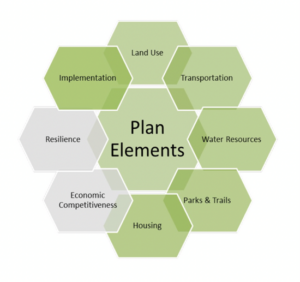
Comprehensive plan elements. (Twin Cities Metropolitan Council)
The Housing chapter would prescribe compactness of form—of housing developments as well as of houses. Goods and services would be provided within walking distance or a short public transit ride. Amenities and services such as garden space, orchards, laundries, and tool shops would be nearby and compact. Building codes would be adjusted to favor using local materials, and to aim at low-impact energy use.
The Land Use chapter would have special importance in the Comprehensive Plan. Based on measures such as ecological services, agricultural use, species richness, watershed protection and other metrics of biocapacity, areas outside those reserved for human habitation would be placed in Conservation Districts. Likewise, Rural Preservation Areas would aim to preserve farmland by allowing only low-density human habitation. To further limit expansion, the Plan would include an urban services boundary and create a greenbelt of rural land that precludes urban development.
The Details are in the Data
Comprehensive plans are the chief guiding documents of a city or county. But clear data and analyses are also needed to guide policy decisions. Preservation of biocapacity is an important goal, but policymakers will need to know the locations of natural areas and farmland, and their characteristics such as biodiversity or agricultural productivity, in order to formulate the proper policies.
Likewise, elected representatives could best advocate for limits if the costs of growth are fully accounted for. Growth impact assessments that include cost calculations are indispensable. These assessments should include direct costs of infrastructure and services as well as indirect costs including the loss of ecological services and the reduction in biocapacity.
Community footprint analyses that quantify human economic and social demand on the county’s natural capital provide a clear basis for protecting the reserve capital through land preservation and reducing human impact through other policies, such as efficiency measures in building and transportation. Where footprint analysis is not available, county GDP should be used as an indicator of environmental impact.

Natural capital should be integral to urban planning. (Randy von Liski, Flickr)
Other reports and action plans that complement a steady-state comprehensive plan are already being utilized by many communities. Climate action and sustainability plans provide strategies to lessen energy consumption. Local food charters offer ways of expanding the local food economy to protect farmland, provide employment, and provide for county food security. Reports on import replacement and establishing a diverse local economy offer ways to build community wealth by recirculating dollars as an alternative to the wealth building that is presumed to come from continual expansion.
The process of creating a Steady-State Comprehensive Plan will require engaging citizens. Surveys indicate that many citizens see growth and sprawl as a pressing problem, with one poll reporting that 77 percent of Americans see sprawl-driven destruction of farmland and natural habitat as a major problem or somewhat of a problem. Given this sentiment, community leaders should be asking a crucial question: What is the ideal size of our community?
Dave Rollo is a Policy Specialist and team leader of the Keep Our Counties Great campaign at CASSE.

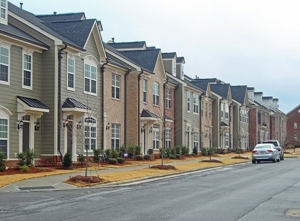
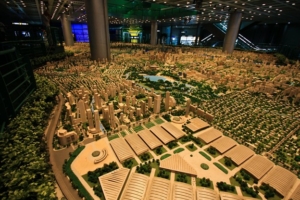
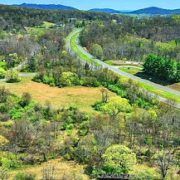



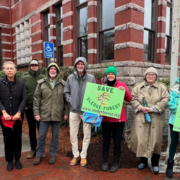

I have spent 30 years trying to live a steady state way of life and get others to consider this alternative as healthier and more enriching. The Economy, Housing and Land Use chapters should be worn as a badge of honor, and used to promote the steady state. Every word in this article resonates, but I would also love to see a one-page leaflet, with a CASSE logo, as a summary of the article, that could be distributed at our local community meetings. I will be visiting two daughters in California, in a tale of two unsustainable cities. If such a leaflet would be made available, I would proudly print and distribute to authorities and citizens.
Hi Mark,
Thank you for weighing in, and for your support of the article. I’m in total agreement that a one-pager for distribution to electeds, planners and citizens is needed. I’m happy to report that such a leaflet is in process, and will be available soon on our website.
I need that leaflet, too. My borough is embarking on a new comprehensive plan. We are a suburban community with a population of 6,600.
These are all fine ideas but they ignore the fact that growth is imposed on local municipalities — they have no control over who or how many want to move to their city and they keep coming. In addition, the higher authority (Province, in the case of Canada) imposes readiness of x acres of serviced or servicable land to meet demand. (Of course, there are choices in how that demand is met: through increased density, sprawl, or a combination.)
More fundamentally, and that is really the hard message to get across, as all ecological economists know, total throughput must be reduced for human existence to have a chance to survive. People are not yet prepared to confront that reality, except the tiny minority who have decided to “live lightly.” Comprehensive plans do not call for it.
Such great points, Erwin. First, you are right to observe that local municipalities are open systems – people can and will move in and out – but, I wish to impart that citizens can push back on the growth paradigm. Although I am not aware of the imposition of serviceable land in Canada, there is the opportunity to place brakes first on discretionary facilitation of growth, and second, to take measures to safeguard a community’s biocapacity. Zoning code revision, service boundaries, greenbelts, conservation planning, the increased valuation of farmland due to growing local food economy are ways to combat growth and sprawl.
The message to local leaders is a challenging one to make to be sure, and may be unfamiliar to them. But, as climate change has focused attention on global limits, there is an opportunity to extend the argument to other kinds of limits – water, arable land, ecological services, and so forth. There is manifest need to preserve these capacities locally. Likewise, as most people don’t benefit from growth, the potential of an activated citizenry holding their local leaders accountable is substantial.
1) Can you point to examples of specific counties, cities, suburban communities, and rural places that have adopted a LTG zoning code, with a link to their zoning code? My borough is unlikely to adopt anything with no example to refer to.
2) My internal conflict / cognitive dissonance is this: I totally subscribe to the LTG model. At the same time, I recognise the severe housing shortage across North America and the injustice it inflicts. Furthermore, we expect domestic and international climate migration to intensify over the course of the century, with all the housing demands that entails. Can you suggest a way to navigate LTG and housing justice together?
3) My borough government consists of 7 elected councilmembers, 1 mayor, and appointees across several commissions, boards, and councils. None of the elected officials have a mental model of humanity’s overshoot, not even the one who is outright panicked about climate change and is pushing for a solar PPA to power the borough’s electricity. I wrote a document consisting of mostly pictures and emailed it to them. I don’t know if any of them really read it. The one who worries about climate change utterly dismissed it. Public comment at meetings is limited to 3 minutes. Neither the elected government nor any of the commissions has invited me to present LTG. HOW DO I GET THIS ACROSS?